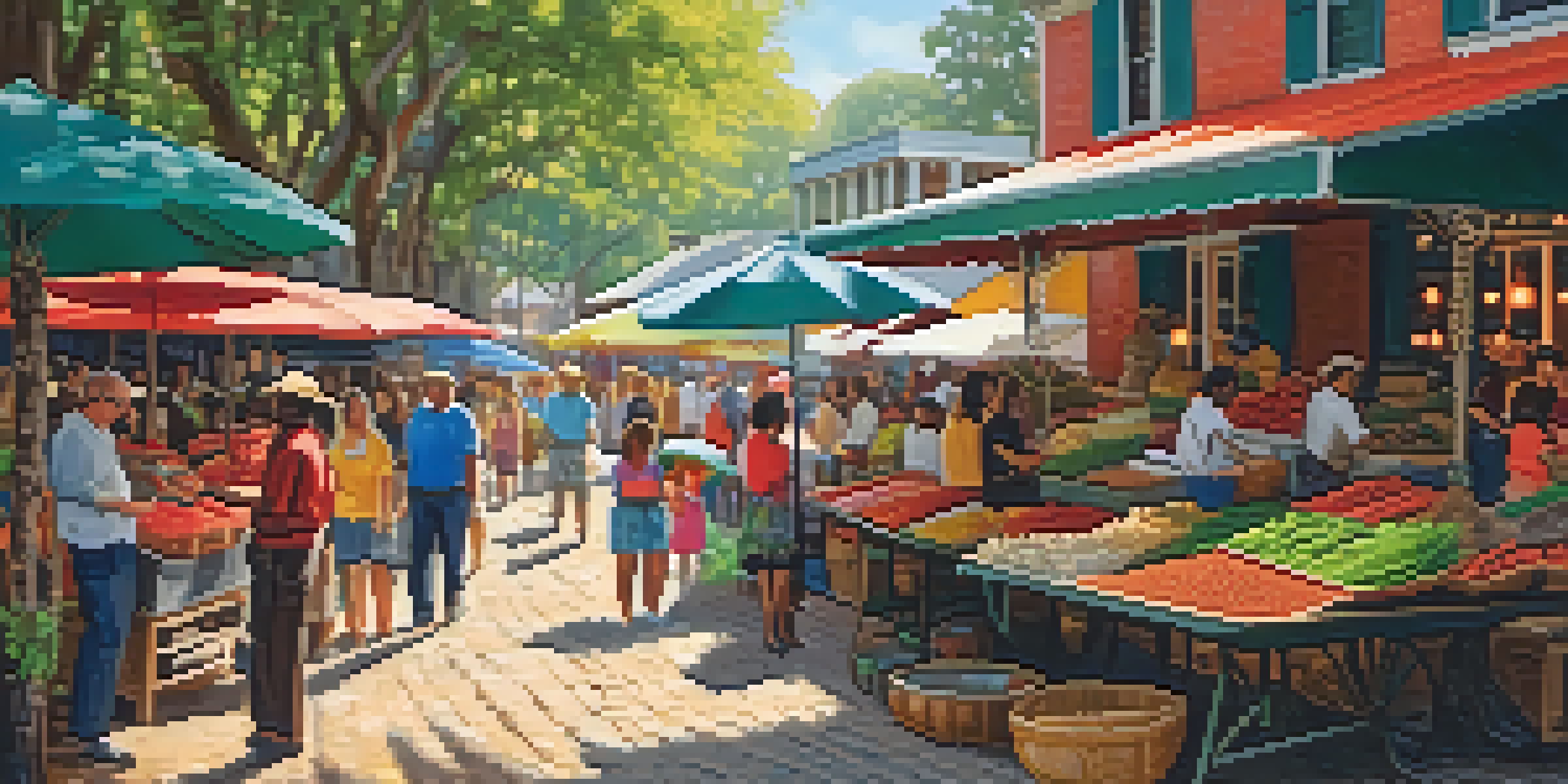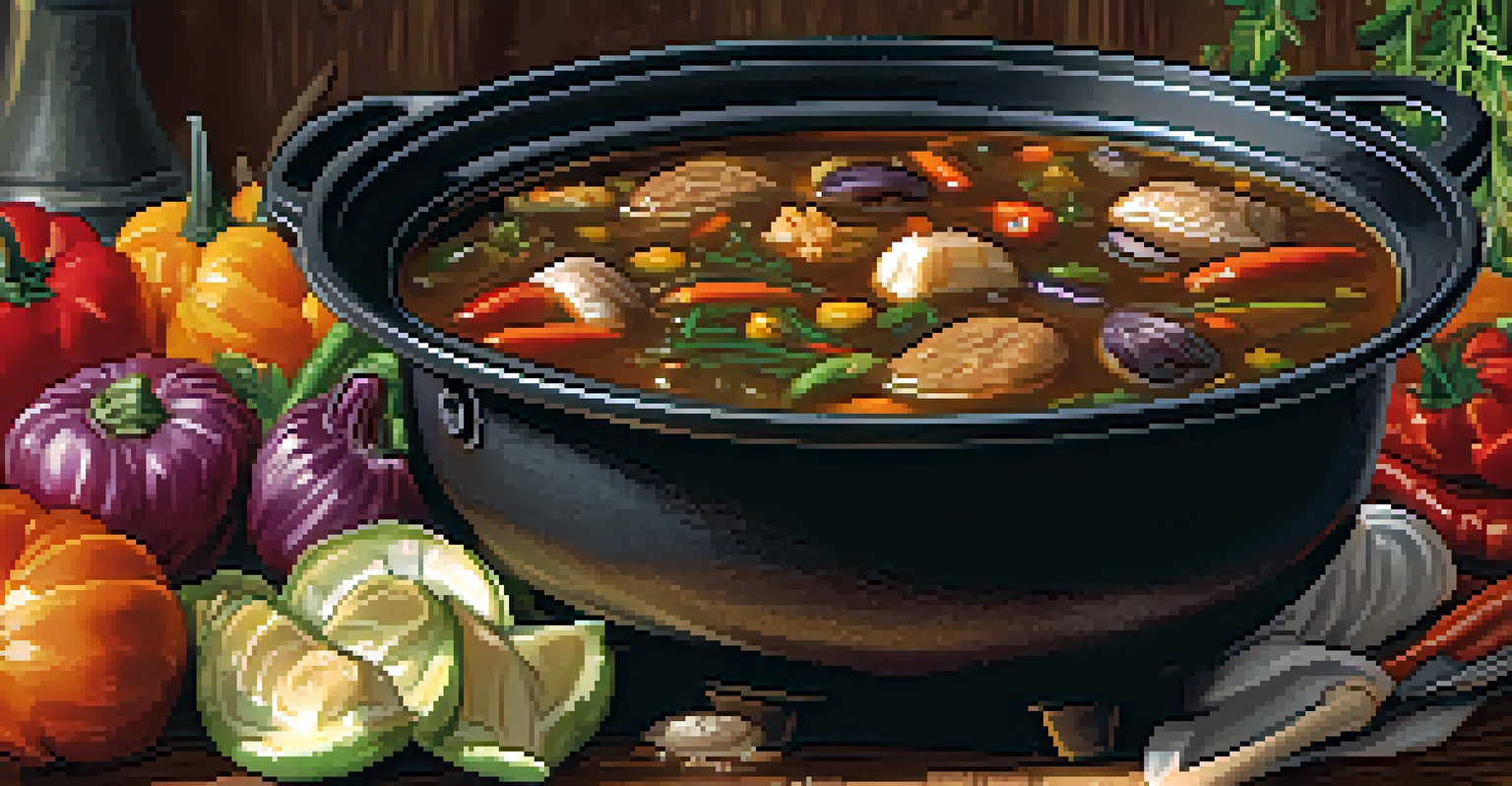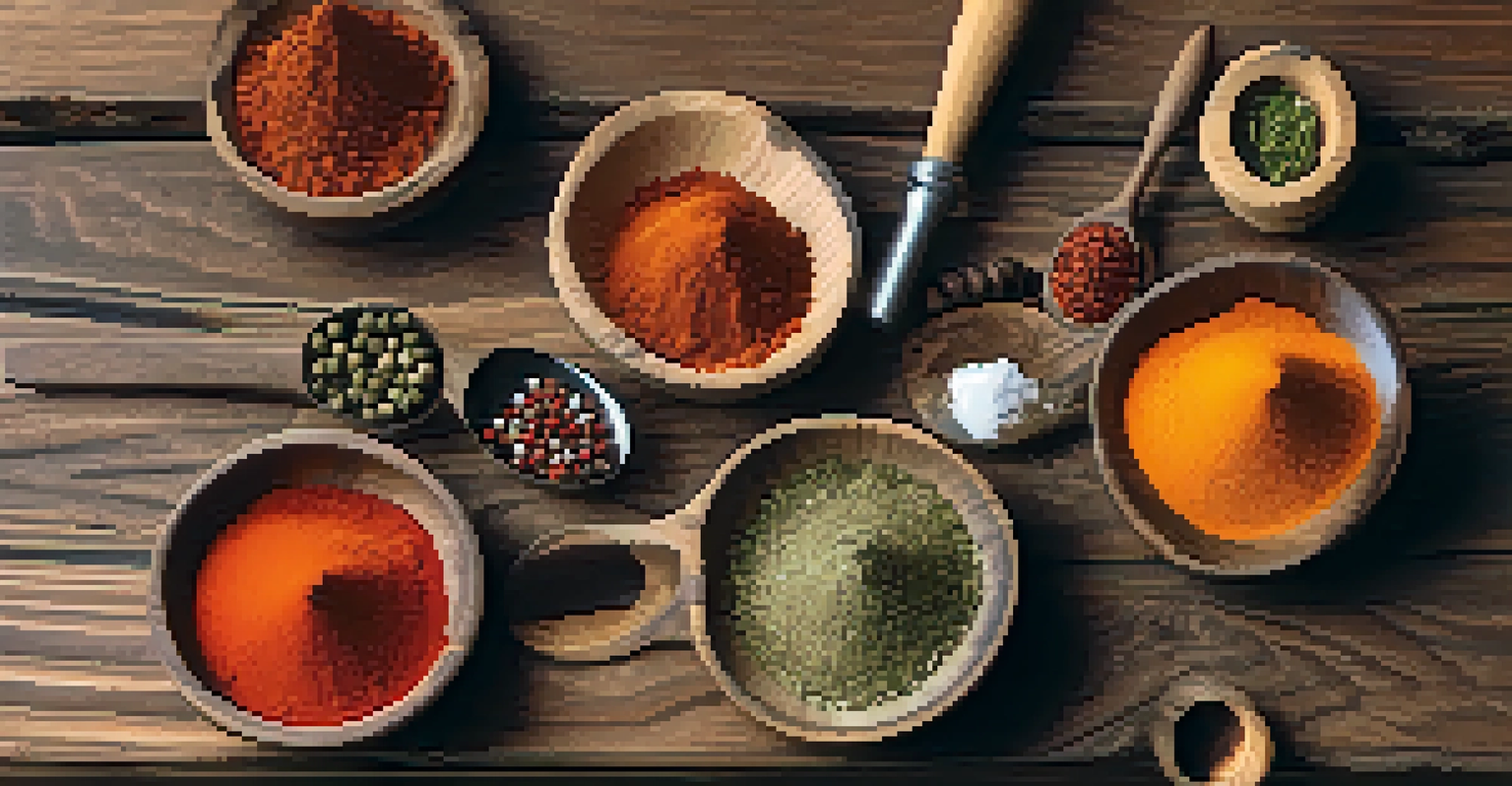The Role of Spices in Louisiana's Culinary Identity

The Spice Trade: A Historical Overview of Louisiana's Flavor
Louisiana's culinary landscape is steeped in history, influenced by various cultures that settled in the region. The spice trade played a pivotal role in introducing flavors that defined this vibrant cuisine. From the French and Spanish to African and Native American influences, each group brought unique spices that shaped local dishes.
Food is our common ground, a universal experience.
As settlers explored the New World, they discovered a wealth of spices that would become integral to their cooking. Ingredients like cayenne pepper, paprika, and thyme found their way into traditional recipes, creating a distinctive flavor profile. These spices not only enhanced taste but also preserved food in a time before refrigeration.
Today, the legacy of this spice trade continues to be celebrated in Louisiana’s kitchens, showcasing how historical influences have melded to form a unique culinary identity. Each bite tells a story, revealing the rich tapestry of cultures that have come together in this flavorful region.
Cajun vs. Creole: Spice Differences Explained
When diving into Louisiana cuisine, it’s essential to understand the difference between Cajun and Creole cooking, especially regarding spice usage. Cajun cuisine leans towards rustic, hearty flavors, using ingredients like cayenne and black pepper liberally. In contrast, Creole cooking is often considered more refined, incorporating a broader range of spices, including herbs like basil and parsley.

Cajun dishes like jambalaya and gumbo typically highlight bold, straightforward spice profiles that reflect the rural roots of the Cajun people. Meanwhile, Creole dishes might blend spices in more complex ways, showcasing the influence of European techniques and ingredients. This nuanced approach adds depth to the flavors.
Spice Trade Shaped Louisiana Cuisine
The spice trade introduced diverse flavors that have become integral to Louisiana's rich culinary identity.
Understanding these differences not only enhances your appreciation for Louisiana food but also highlights the cultural significance of each style. Both cuisines celebrate spices, but they do so in ways that reflect their distinct histories and communities.
Key Spices That Define Louisiana Cuisine
Several spices stand out as cornerstones of Louisiana cooking, each contributing its unique flair. Cayenne pepper, for example, is a staple that adds heat and depth to many dishes, making it a favorite among local chefs. Likewise, the use of garlic and onion powder helps to create the aromatic base that is essential in countless recipes.
Cooking is like love. It should be entered into with abandon or not at all.
Other spices like thyme and bay leaves are often added to stews and sauces, lending their earthy flavors to dishes such as gumbo and étouffée. Moreover, the blend known as 'file powder,' made from ground sassafras leaves, is uniquely Louisiana and provides a distinctive taste to many local soups and gumbos.
These spices are not merely ingredients; they are the heart and soul of Louisiana's culinary identity, bringing together flavors that speak to the region's rich cultural tapestry. Each spice tells a story, connecting generations of cooks and diners alike.
The Influence of Local Ingredients on Spice Choices
Louisiana’s unique geography and climate play a significant role in determining which spices are used in its dishes. With access to fresh seafood, game, and an array of vegetables, the local food culture thrives on vibrant, fresh flavors. This availability allows chefs to experiment with spices that complement the local bounty.
For instance, the use of citrus, especially in seafood dishes, enhances the spice profiles and brings out the natural flavors of the ingredients. Similarly, herbs like green onions and parsley are often paired with spices to create layers of flavor that elevate the dish.
Cajun vs. Creole Spice Profiles
Cajun cooking favors bold, rustic spices, while Creole cuisine showcases a more refined and complex blend of flavors.
The relationship between local ingredients and spices reflects a commitment to freshness and seasonality, making Louisiana’s cuisine not only delicious but also deeply connected to its environment. This harmony between spice and ingredient showcases the creativity of Louisiana cooks.
Spices and the Art of Louisiana Cooking Techniques
Cooking in Louisiana is as much an art as it is a science, with spices playing a vital role in various cooking techniques. Techniques such as sautéing, braising, and smoking are often combined with spices to achieve rich, complex flavors. For example, the 'Holy Trinity' of Cajun cooking—onions, bell peppers, and celery—is typically sautéed with spices to create a flavorful base.
Additionally, the art of seasoning—knowing when and how much spice to add—requires skill and intuition. This is often passed down through generations, emphasizing the importance of practice and experience in mastering Louisiana's culinary techniques.
Ultimately, the synergy between cooking methods and spices is what elevates Louisiana cuisine to new heights. Each technique enhances the spices, resulting in dishes that are not only tasty but also deeply satisfying.
Spices in Modern Louisiana Cuisine: Trends and Innovations
As culinary trends evolve, spices in Louisiana cuisine are experiencing a renaissance, blending traditional flavors with modern techniques. Chefs are now experimenting with global spices, integrating them into classic dishes to create innovative interpretations. For instance, the incorporation of Asian spices like ginger and lemongrass can be found in contemporary gumbo recipes.
Additionally, the farm-to-table movement emphasizes the use of locally sourced spices and herbs, further enhancing the connection between cuisine and community. This trend not only supports local farmers but also ensures that the freshest ingredients are used in cooking.
Spices Reflect Cultural Heritage
Spices in Louisiana cuisine symbolize the region's cultural diversity and history, connecting communities through shared culinary traditions.
The evolution of spice use in Louisiana cuisine reflects a broader culinary landscape that honors tradition while welcoming creativity. This dynamic allows chefs to push boundaries while still respecting the rich heritage of the region.
The Cultural Significance of Spices in Louisiana
Spices in Louisiana are more than just flavor enhancers; they symbolize the cultural diversity and history of the region. Each spice tells a story of the people who brought it, creating a culinary language that transcends generations. This connection fosters a sense of identity and community among those who share and celebrate these flavors.
Festivals such as the New Orleans Jazz & Heritage Festival showcase the importance of food and spices in local culture, bringing people together through shared culinary experiences. These events highlight how food serves as a medium for storytelling, connecting individuals through shared meals and memories.

Ultimately, the cultural significance of spices in Louisiana extends beyond the plate, enriching social interactions and community bonds. They are a testament to the region's rich history and the power of food to unite people from all walks of life.